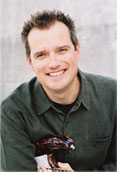Yesterday I spouted off about the lyrics of today’s worship songs–that they are all vertical (between me and God), and rarely address horizontal issues (relationships with other Christians, reaching out to nonChristians). Now, my youth group days (the 1970s) featured plenty of vertical songs: “I Just Came to Praise the Lord,” “He is Lord,” “God is So Good,” “Let’s Just Praise the lord,” “Something Beautiful,” “O How He Loves You and Me,” and Keith Green’s “O Lord, You’re Beautiful.” Most of these don’t hold a candle to the wonderful songs being written today, like “Worthy is the Lamb,” “Once Again,” and “Amazing Love.” I’ll take today’s vertical songs.
But I wish more songs, with just as much quality, could be written about the body of Christ and the lost. I’m talking about songs designed for congregational singing. And we had many of them in “my day,” that being the 1960s and 1970s.
Evangelism
In my youth group days, we constantly sang about salvation and the need to reach the lost. We exuberantly exhorted, “Get all excited, go tell everybody that Jesus Christ is King.” Another song, “Freely,” instructed:
Freely, freely you have received,
Freely, freely give
Go in my name and because you believe,
Others will know that I live.
Then there’s the straightforward “I’ll Tell the World,” which said:
I’ll tell the world that I’m a Christian
I’m not ashamed, his name to bear
I’ll tell the world, that I’m a Christian
And take it with me everywhere.
I’ll tell the world how Jesus saved me
And how he gave me life brand new
And I know that if you trust him
That all he gave me he’ll give to you.
We also, of course, sang “This Little Light of Mine,” in which we promised to shine our light all over our town, our school, our country, etc. The much-maligned “Pass It On” (which I unashamedly loved) says:
That’s how it is with God’s love,
once you’ve experienced it.
You want to sing, it’s fresh like spring,
you want to pass it on.
Another oldie said, “They’ll know we are Christians by our love.” Who is “they”? Nonbelievers, of course. And then we had, “Let the redeemed of the Lord say so.” In other words, if you’re saved, tell others about it.
The Church Body
We used to sing Lanny Wolfe “God’s Wonderful People,” which said:
I love the thrill that I feel when I get together
with God’s wonderful people
What a sight just to see all the happy faces,
praising God in heavenly places
We sang “Bind us Together.” We proclaimed, “We are One in the Bond of Love.” And we celebrated, “I’m so glad I’m a part of the family of God.”
Those are just some of the songs I remember singing as a youth, songs with a horizontal emphasis. I can’t cite, offhand, a single current worship song which talks about the body of Christ. I love “If We are the Body,” by Casting Crowns; but that’s not a song you sing corporately. And only a few songs have an evangelistic emphasis:
- “Salt and Light” is the clearest, sustaining the evangelistic theme throughout. “I Wanna Sing” is close behind, saying, “I wanna sing of your kindness, wanna share the good news. As long as I can sing I wanna sing about you.”
- “Shine Jesus Shine” says to “Flood the nations with grace and mercy, send forth your word.”
- Another of my contemporary favorites says, “We wanna see Jesus lifted high, a banner that flies across the land, that all men might see the truth and know He is the way to heaven.”
- “Days of Elijah,” a wonderfully unique song, says:
We are the voice in the desert crying,
“Prepare ye the way of the Lord….
And these are the days of the harvest,
the fields are white in the world,
and we are your laborers in your vineyard,
Declaring the Word of the Lord.
Hymns are filled with lyrics about salvation: “Send the Light,” “Lead Me to Calvary,” “Just As I Am,” “I Surrender All,” “Rescue the Perishing,” “Since Jesus Came Into My Heart,” “What a Wonderful Change,” and many more. And songs about the church: “Bless Be the Tie that Binds,” “The Church’s One Foundation,” “I Love Thy Kingdom Lord.”
And then there’s “Onward Christian Soldiers,” which brings the church and evangelism together:
Like a mighty army, moves the church of God
Brothers we are treading where the saints have trod
We are not divided, all one body we.
One in hope and doctrine, one in charity.
Onward Christian soldiers, marching as to war
With the cross of Jesus going on before.


 Last night, ten of us from Anchor attended a Tommy Walker concert at Blackhawk Baptist, one of the megachurches in Fort Wayne. The place was packed. We occupied the right side of two pews in the steep balcony. It was not a young crowd, so I wouldn’t put it in the post-modern fold. It looked to me like most people attending were in their 30s and 40s. Which described Anchor’s delegation.
Last night, ten of us from Anchor attended a Tommy Walker concert at Blackhawk Baptist, one of the megachurches in Fort Wayne. The place was packed. We occupied the right side of two pews in the steep balcony. It was not a young crowd, so I wouldn’t put it in the post-modern fold. It looked to me like most people attending were in their 30s and 40s. Which described Anchor’s delegation.



